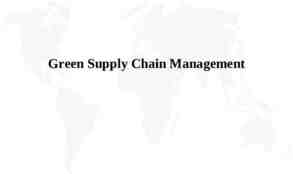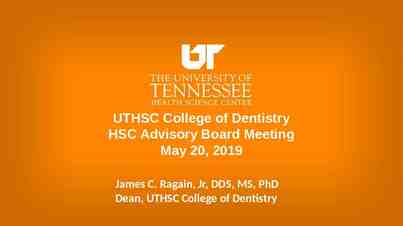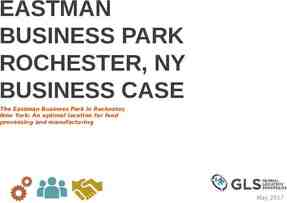SFU LIBRARY FOR CRIMINOLOGY GRADS Yolanda Koscielski, Librarian
32 Slides3.38 MB

SFU LIBRARY FOR CRIMINOLOGY GRADS Yolanda Koscielski, Librarian for Criminology, Philosophy, and Psychology September 23, 2016

Content PART 1: Broad overview of SFU Library resources and services PART 2: A brief introduction to the graduate literature review

LIBRARY RESOURCES AND SERVICES A bit about everything.

What resources and services do you have in mind when you think of SFU Library?

SFU Library Homepage Homebase Library Search vs. Fast Search vs. Catalogue Search Library Search for all resources on handout

Library support offered every step of the way Starts with beginning a research topic To handing in/publishing a work Alumni privileges

GIS and Maps GIS help consultations GIS training access to geospatial data provision of GIS software guidelines for citing geospatial data and maps GIS networking and events access to the map collection

Research Data Library/Statistical Sets Services and support include assistance with: locating and acquiring of data files, including microdata resources locating statistical resources and information identifying appropriate datasets and of variables within a dataset, and assisting with data extractions of selected variables to create custom datasets for research or instructional use.

Open Access Publishing SFU Central Open Access Fund to help cover article processing fees in open access journals The Tri-Agency Open Access Policy: How the Library Can Help

The Policy All peer-reviewed journal publications resulting from funding by the Tri-Agency (CIHR, NSERC, SSHRC) must be freely available online within 12 months of publication – Grad students are exempt!

Rationale Open access is the practice of providing free and unrestricted online access to research publications and data. This greater access is expected to accelerate the progress of research, democratize access to knowledge worldwide, and ensure that publicly funded research is available to the public. Open access makes it possible for research results to have a greater impact and enables researchers, scholars, clinicians, policymakers, private sectors and not-for-profit organizations and the public to use and build upon this knowledge.

Open Access publishing models Publishing Gold Open Access Publish in an open access journal. Publishing Green Open Access Publish in a conventional journal but also publish your article in an online repository for a discipline (e.g., Public Library of Science) or an institution (e.g., SUMMIT at SFU).

Publishing considerations

Research Data Management Research Data M anagement at SF U Library Library provides expertise and infrastructure to help meet researchers’ responsibilities on research data stewardship management

LITERATURE REVIEWS A brief introduction

What is a literature review? A key component of almost all research papers. The term is often applied loosely to describe a wide range of methodological approaches. A literature review in a first or second year course may involve browsing the library databases to get a sense of the research landscape in your topic and including 5 journal articles in your paper. At the faculty or grad level, the review may involve completing a comprehensive search, complete with documented search strategies and a listing of article inclusion and exclusion criteria. In the most rigorous format - a Systematic Review - a team of researchers may compile and review over 100,000 journal articles in a project spanning one to two years!

Types of reviews Types include systematic reviews, scoping reviews, realist reviews, narrative reviews, mapping reviews, and qualitative systematic reviews, The protocols and distinctions for review types are particularly delineated in health research fields, but we are seeing conventions quickly establishing themselves in other academic fields. Mapping Review: "A rapid search of the literature aiming to give a broad overview of the characteristics of a topic area. Mapping of existing research, identification of gaps, and a summary assessment of the quantity and quality of the available evidence helps to decide future areas for research or for systematic reviews." (Booth et al., 2012, p. 264) Scoping Review: "A type of review that has as its primary objective the identification of the size and quality of research in a topic area in order to inform subsequent review" (Booth et al., p. 269).

Types of Reviews Narrative Review: "A term used to describe a conventional overview of the literature, particularly when contrasted with a systematic review" (Booth et al., p. 265). Note: this term is often used pejoratively, describing a review that is inadvertently guided by a confirmation bias. Systematic Review: "A review of a clearly formulated question that uses systematic and explicit methods to identify, select and critically appraise relevant research and to collect and analyse data from the studies that are included in the review" (Booth et al., p. 271). Note: a systematic review (SR) is the most extensive and well-documented type of lit review, as well as potentially the most time-consuming. The idea with SRs is that the search process becomes a replicable scientific study in itself. This level of review will

What is a Systematic Review? *A systematic review attempts to collate all empirical evidence that fits prespecified eligibility criteria in order to answer a specific research question. It uses explicit, systematic methods that are selected with a view to minimizing bias, The key characteristics of a systematic review are: a clearly stated set of objectives with pre-defined eligibility criteria for studies; an explicit, reproducible methodology; a systematic search that attempts to identify all studies that would meet the eligibility criteria; an assessment of the validity of the findings of the included studies, for example through the assessment of risk of bias; and *Higgins Green S (editors). Section 1.2.2 What is a Systematic review. IN Cochrane Handbook for Systematic Reviews of aJPT, systematic presentation, and synthesis, of the characteristics and findings of the Interventions Version 5.1.0 [updated March 2011]. The Cochrane Collaboration, 2011. Available from www.cochrane-handbook.org. included studies. Accessed March 21, 2012.

Methods Many lit review types are based on organization-driven specific protocols for conducting the reviews. These protocols provide specific frameworks, checklists, and other guidance to the generic literature review sub-types. Cochrane Review (health) Campbell Review (social sciences)

Criminology, Law, & Other Databases Literature/systematic reviews involve identifying the right databases and places to search.

Where to get your resources Three broad categories of sources from which studies were located for a complex systematic review: 30% from databases & hand search 51% from “snowballing” 24% from personal knowledge Greenhalgh, T and Peacock, R. Effectiveness and efficiency of search methods in systematic reviews of complex evidence: audit of primary sources. British Medical Journal 331:1064-1065, 2005

About Googling

About Googling - Pros Allows you to cast a wide net in your search. The most popular articles are revealed A high volume of articles are retrieved Google's algorithm helps compensate for poorly designed searches Full-text indexing of articles is now being done in Google Scholar A search feature allow you to search within articles citing your key article Excellent for known-item searching or locating a quote/citation Helpful when searching for very unique terminology (e.g., places and people) Times cited tool can help identify relevant articles Extensive searching of non-article, but academic, information items: universities' institutional repositories, US case law, grey literature, academic websites, etc.

About Googling - Cons The database is not mapped to a specific discipline Much less search sophistication and manipulation supported Psuedo-Boolean operators (limited use) Missing deep data (e.g., statistics) Mysterious algorithms and unknown source coverage at odds with the systematic and transparent requirement of a literature review. Searches are optimized (for example, by your location), thwarting the replicability criteria of most literature review types Low level of subject and author collocation - that is, bringing together all works by one author or one sub-topic Challenging to run searches that involve common words. A search for "art AND time", for example, might bring up results on the art of time management when you are looking for the representation of time in art. In contrast, searching by topic is readily facilitated by use of subject headings in discipline-specific databases. Google Scholar has no subject headings. New articles might not be pushed up if the popularity of an article is prioritized Indexes articles from predatory publishers, which may be hard to identify if working outside of your field

Featured Resource: Sage Resea rch Method SRMO is an online portal s Online (SR to research methodology information in the social MO) sciences 600 online books Chapter: “Looking Forward: the Future of Qualitative Research in Criminology” Chapter: “Doing Research on Crime and Justice: A Political Endeavour?” Research Methods Map Videos

Featured Resource: Oxford Bibli ographies O Criminology component nline Outlines key readings under each topic. Useful for comprehensive exams Good introductory text to key theory

Featured Resource: Summit Find SFU Criminology theses and dissertations in Summit Summit is the Simon Fraser University research repository. It brings together the scholarship of SFU researchers and was developed as a part of a broader open access strategy. Excellent source for citations, especially with local topics See also the database Digital Dissertations for worldwide theses and dissertation Example: Media and Government: The Role of the Director of Communications

Featured Resource: Canadian El ectronic Lib Essential rary Canadian content Grey literature indexing and discovery: government, think tank, & NGO research and policy papers Part of literature search Formerly called Canadian Public Policy Collection

Subject Headings v. Keywords Needed for most graduate-level lit reviews About Subject Headings: Applied systematically: articles and books will usually have about 3-8 subject headings assigned to their bibliographic record. From a finite pool of terms - one that is updated periodically Organized in a hierarchical taxonomy – broader, narrower and related terms Provide a standardized way to describe a concept. For instance, a subject heading of "physician" may be used to capture many of the natural language words that describe a physician such as doctor, family doctor, GP, and MD. Demo: PsycINFO

Keeping track of your research Citation management software A citation management program (Mendeley, Zotero, Endnote, and RefWorks, etc.) is essential for completing a comprehehsive lit review. Access and manage your sources online, all in one place Automatically generate bibliographies Work collaboratively with references De-duplicate your search results

Individual Research Consultation Available Yolanda Koscielski, Librarian for Criminology, Psychology, Philosophy [email protected] Ask A Librarian: email, text, consult /drop in, phone, chat






